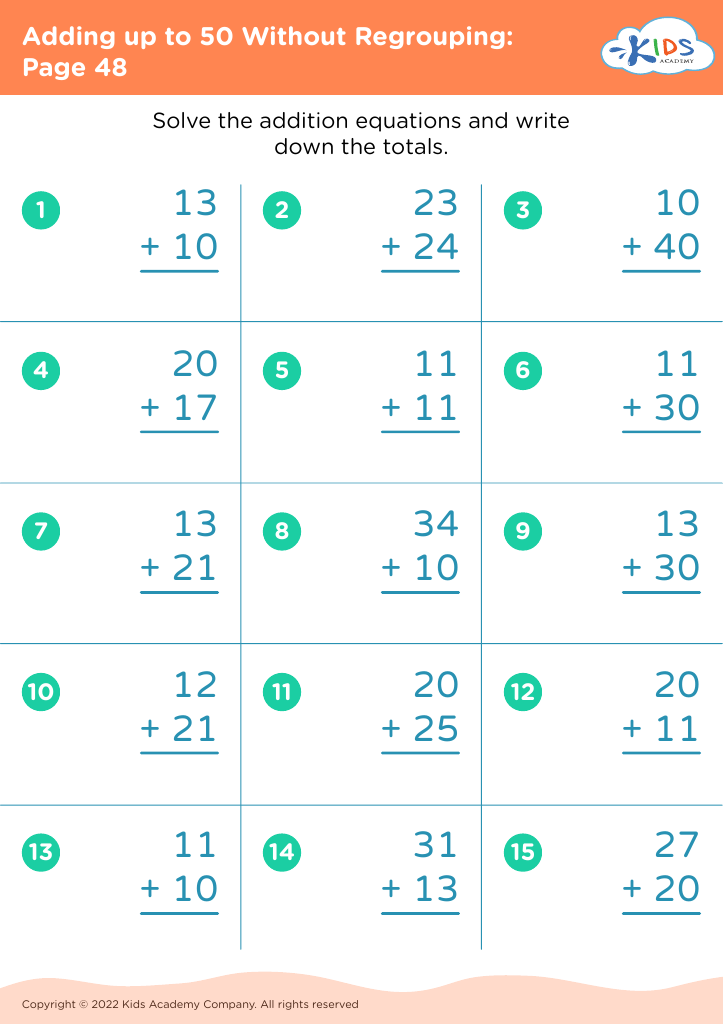Comparing quantities Addition Worksheets for Ages 3-8
7 filtered results
-
From - To
Explore our engaging "Comparing Quantities Addition Worksheets" designed for children aged 3-8! These worksheets introduce young learners to essential math concepts in a fun and interactive way. Children will discover how to compare and add quantities through hands-on activities that enhance their problem-solving skills. Our thoughtfully crafted exercises promote early numeracy, helping kids understand the relationship between numbers while fostering confidence in their math abilities. Ideal for both classroom and home learning, these resources support a strong foundation in mathematics. Download today and watch your child's interest in mathematics grow as they compare, add, and excel in learning!


Recycling - More or Less Worksheet
Comparing quantities through addition is a fundamental skill that lays the foundation for mathematical understanding in children aged 3-8. This skill is vital because it fosters critical thinking and aids in cognitive development. When children learn to compare quantities, they start to understand concepts such as more, less, and equal, which are essential to their overall mathematical literacy.
By engaging children in activities that involve addition, such as counting blocks, playing with toys in groups, or using visual aids, parents and teachers can make learning exciting and interactive. Such activities not only enhance their numeracy skills but also promote problem-solving abilities and reasoning. This early exposure to mathematical concepts prepares children for more advanced topics in later education.
Moreover, comparing quantities helps to build a child's confidence in mathematics. A solid grasp of addition and comparison allows them to approach more complex problems without fear. It also encourages communication skills, as they learn to articulate their thinking and reasoning clearly. By nurturing these foundational skills, parents and teachers empower children to become confident, competent learners, paving the way for lifelong success in both mathematics and everyday decision-making. Thus, it is crucial for caregivers to prioritize and support the understanding of comparing quantities through addition.





 Assign to My Students
Assign to My Students


















